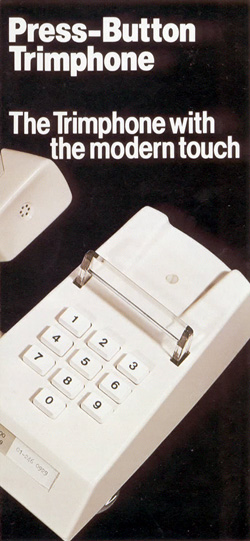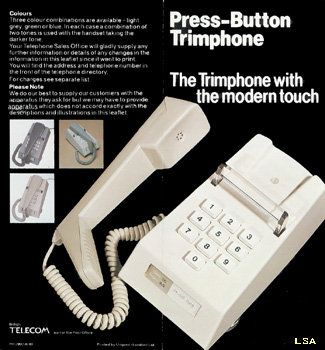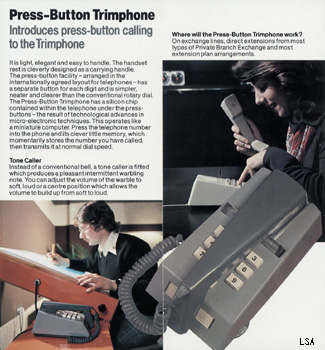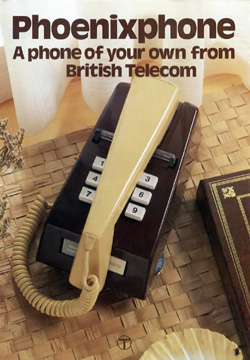 |
Press-Button Trimphone-The Trimphone with the modern touch, so read the publicity leaflet of August 1980. |
Leaflets | TRIMPHONE |
Press-Button Trimphone introduces press-button calling to the Trimphone.
It is light, elegant and easy to handle. The handset rest is cleverly designed as a carrying handle. The press-button facility - arranged in the internationally agreed layout for telephones-has a separate button for each digit and is simpler, neater and clearer than the conventional rotary dial. The Press-Button Trimphone has a silicon chip contained within the telephone under the press-buttons - the result of technological advances in micro-electronic techniques. This operates like a miniature computer. Press the telephone number into the phone and its clever little memory, which momentarily stores the number you have called, then transmits it at normal dial speed.
Tone Caller
Instead of a conventional bell, a tone caller is fitted which produces a pleasant intermittent warbling note.You can adjust the volume of the warble to soft, loud or a centre position which allows the volume to build up from soft to loud.
Where will the Press-Button Trimphone work?
On exchange lines, direct extensions from most types of Private Branch Exchange and most extension plan arrangements.
 |
 |
Colours |
|
Please Note We do our best to supply our customers with the
apparatus they ask for but we may have to provide apparatus
which does not accord exactly with the descriptions and
illustrations in this leaflet. British TELECOM-part of the Post Office PH 2902/8/80 Printed by Uniprint (London) Ltd |
||
Technical Details
TI Refs B4 B0152 and D7 C2230
Phoenixphones
All logos and trade marks are the property of their respective owners and are used on the Light Straw site(s) for review only. Students and researchers are recommended to make their own independent enquiries as to the accuracy of the information contained therein.
